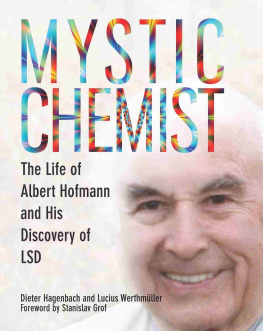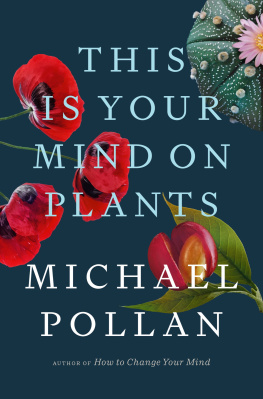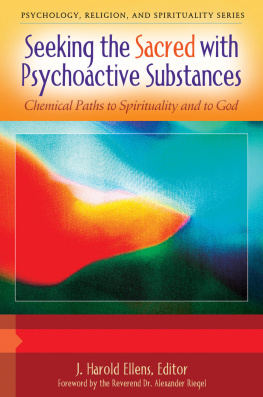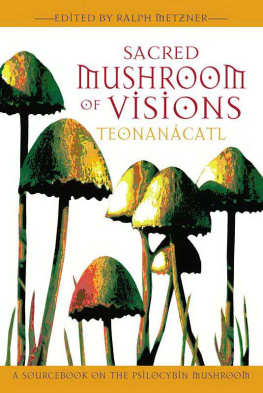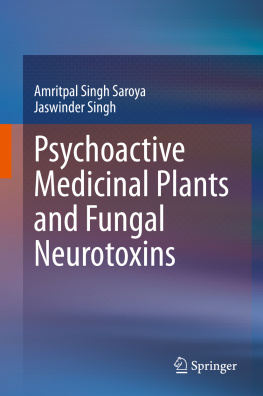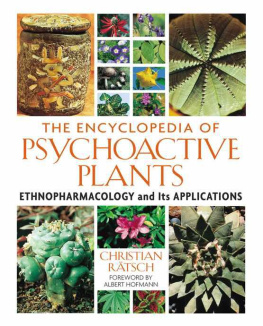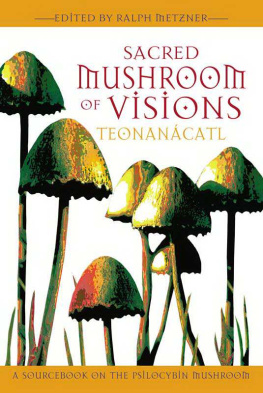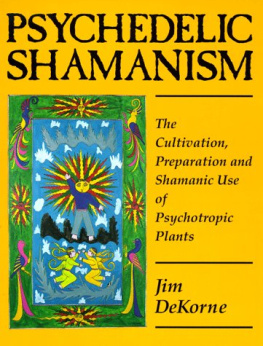

Acknowledgments for the English Edition
I am very gratified that my Encyclopedia of Psycho-active Plants has received so much international recognition that it is now being translated into English and published by Inner Traditions and the courageous Ehud Sperling.
I would like to give special thanks to Dr. John R. Baker for his outstanding translation of this Encyclopedia into English and for his meticulous efforts to eliminate typographical and printing errors and bibliographic inconsistencies! I would also like to thank Annabel Lee and Cornelia Ballent for their excellent translation work.
Translating a work of this size into another language is an enormous undertaking. For the translators, such a task poses many challenges; for the editorial staff, it requires a painstaking attention to detail and a continuous awareness of the big picture. And it is a risk for the publisher. For these reasons, I would also like to thank all of the readers of the English edition for their support of this project!
Christian Rtsch
Contents
Foreword
The real is just as magical as the magical is real.
E RNST J NGER
S IZILISCHER B RIEF AN DE M OUD [S ICILIAN L ETTER TO THE M OON ]
In this world, the point at which something happens is determined by the circumstances that call for it to happen. This Encyclopedia of Psycho-active Plants had to appear at just this time, for our contemporary society has need of such a work.
This need is connected with the spiritual and material dilemma of our times. It is not necessary to list all of the things that are no longer right in our world. But we can mention some: in the spiritual domain, materialism, egoism, isolation, and the absence of any religious foundation; on the material level, environmental destruction as a result of technological development and over-industrialization, the ongoing depletion of natural resources, and the accumulation of immense fortunes by a few people while the majority become increasingly destitute.
These ominous developments have their spiritual roots in a dualistic worldview, a consciousness that splits our experience of the world into subject and object.
This dualistic experience of the world first emerged in Europe. But it had already been at work in the Judeo-Christian worldview, with its god that sits enthroned above creation and humankind, and his admonition to subdue... and have dominion... over every living thing that moveth upon the earth.
This is now occurring at a terrifying rate.
A change for the better will come about only when a general shift in consciousness takes place. Our fractured consciousness, which Gottfried Benn characterized as a fateful European neurosis, must be replaced by a consciousness in which creator, creation, and created are experienced as a unity.
All means and all ways that will help lead to a new and universal spirituality are worthy of support. Chief among these is meditation, which can be enhanced and intensified through a variety of methods, including yogic practices, breathing exercises, and fasting, and through the appropriate use of certain drugs as pharmacological aids.
The drugs I am referring to belong to a special group of psychoactive substances that have been characterized as psychedelics and, more recently, as entheogens (psychedelic sacraments). These effect an enormous stimulation of sensory perceptions, a decrease or even neutralization of the IThou boundary, and alterations in consciousness in the form of both sensitization and expansion.
The use of such psychedelic drugs within a religio-ceremonial framework was discovered among Indian tribes in Mexico at the beginning and in the middle of the twentieth century.
This sensational discovery led to ethno-botanical investigations to remote areas around the world to search for psychoactive plants, the results of which were documented in numerous publications and pictures. The encyclopedic compilation of ancient knowledge and new discoveries about psychoactive plants that is in your hands was produced by a well-qualified author who has contributed important new insights on the basis of his own fieldwork. It is an undertaking of great value.
Disseminating knowledge about psychoactive plants, together with the proper ways to use them, represents a valuable contribution within the context of the many and growing attempts to bring about a new, holistic consciousness. Transpersonal psychology, which is becoming ever more important in psychiatry, pursues the same goal within a therapeutic framework.
The holistic perspective is more easily practiced on living nature than on the inanimate objects created by humans. Let us look into a living mandala instead, such as that found in the calyx of a blue morning glory, which is a thousand times more perfect and beautiful than anything produced by human hand, for it is filled with life, that universal life in which both the observer and the observed find their own individual places as manifestations of the same creative spirit.
A LBERT H OFMANN, P H. D .
SUMMER 1997
Preface
Thoughts are free,... for my thoughts tear the fences and walls asunder....
G ERMAN FOLK SONG
My grandmother taught me many wise things that I have followed my entire life. In particular, her saying An ounce of practice is worth a pound of theory has had a considerable influence upon me and made it much easier to follow the path that has led me to the psychoactive plants.
It was during the 1967 Summer of Love, when I was ten years old, that I first heard of hashish. I was listening to the radio. A menacing voice spoke of the horrible dangers that were descending upon our imperiled youth with the new wave of drugs from the United States. The picture that continues to dominate our drug policies was sketched out in dramatic fashion: Hashish was a gateway drug that inevitably, even compellingly, led to death from a golden shot of heroin. This was terrible news! But by that time I had already learned that I should not trust my teachers or the conservative politicians. I instinctively felt that the voice on the radio was lying. As a result of that broadcast, I yearned for nothing more than finally to try hashish myself (my experiments with cigarettes were already behind me, and I had noticed that I could not find any use or enjoyment there). At that time, it was not as easy to obtain hashish as it is today. Two years went by before I had my first opportunity. Up until then, I had only smoked dried banana peels and inhaled chloroform that I had synthesized myself. One morning, on the school bus, an older student walked down the aisle and whispered, Hash, hash, anyone want hash? I do! I cried, barely able to contain my joy and excitement. Back then, one gram cost about 3.50 marks (roughly one U.S. dollar), my entire allowance. But what does money mean when were talking about the fulfillment of a two-year-old dream?
With the hashish in my pocket, I sat through my classes, bored to death as usual, waiting for the time when I would finally make it back home. After the ordeal of school, the time had finally come. I stood at home with my precious stash and pondered the best way to smoke it. Tobacco was not an option, for I genuinely disliked it. I went into the kitchen, saw a small bag of dried peppermint leaves, and immediately knew that I had found the appropriate admixture. I pedaled my bike into the nearby forest, stuffed a pipe full of mint and hashish, and lit it up. I immediately sensed that this mixture was easy to inhale, a wonderful contrast to those disgusting cigarettes. Although the effects were mild, they were enough to make me want to continue my experiments. The next time, I went into the forest with a friend and we smoked the pipe together. An incredible sense of mirth overwhelmed us, and we almost split our sides with laughter.
Next page

